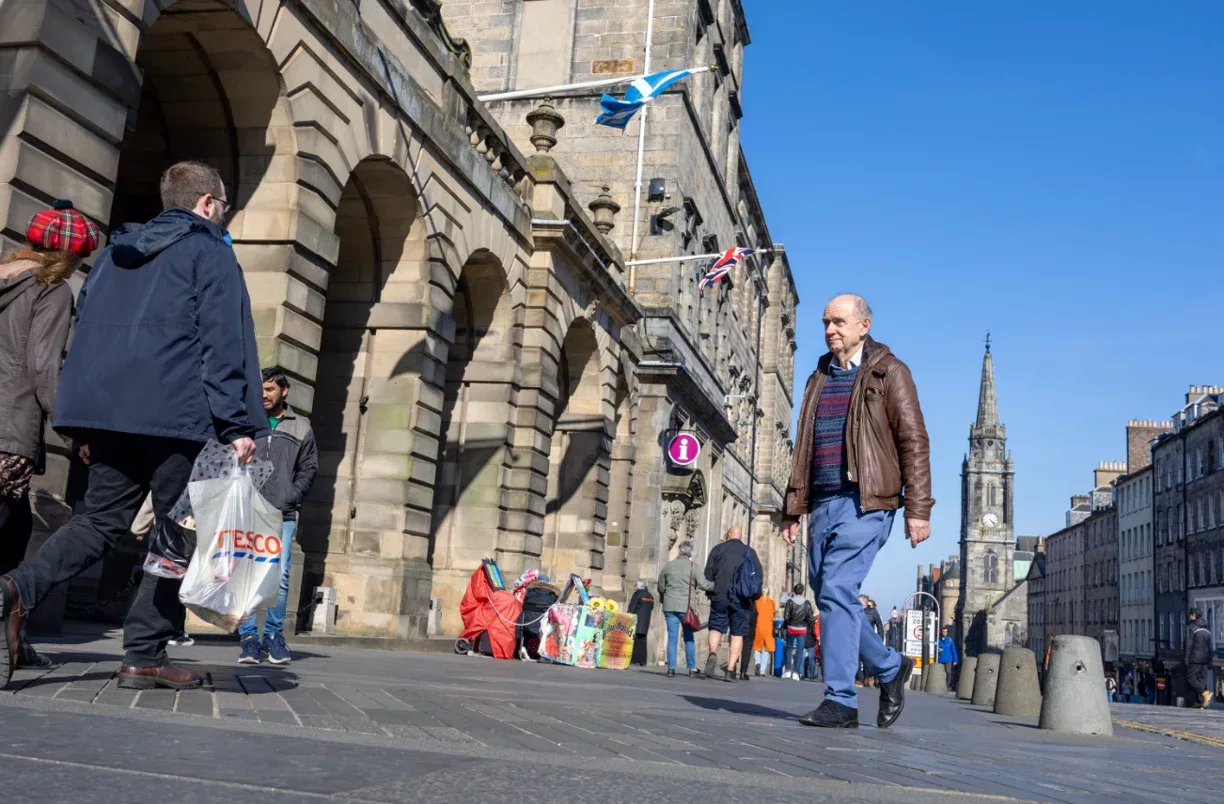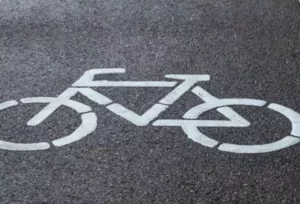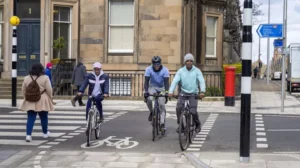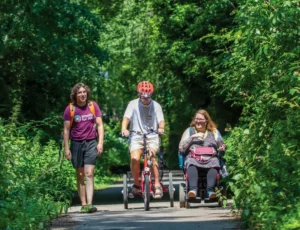A new study suggests older people could benefit from getting outdoors more in their neighbourhoods if there were better pavements and roads, alongside some measures to reduce or slow traffic.
Research by Heriot-Watt University for walking, wheeling and cycling charity, Sustrans and funded by Transport Scotland, found that older adults valued walking and staying active for their physical, mental and social wellbeing. This includes walking for everyday purposes, like walking the dog, and walking for leisure.
“This research shows that fresh air, exercise and a sense of community connection are important benefits for older people to getting out and about,” said Karen McGregor, Director of Sustrans in Scotland. “And access to green space and good public transport are seen as key enablers to staying active, alongside quieter streets.
“Scotland’s population is ageing. The 2022 Census found that there are now over one million people aged 65 and over. It is vital that we take that into consideration as we plan how people move around our towns and cities.”
Participants in the study, who were aged between 60 and 91, said they also faced barriers to staying active. These include poorly designed and maintained streets and pavements, with hazards from potholes and drains, and not enough road crossings, street lighting, parking or public transport.
High levels of traffic and inconsiderate drivers were also an issue. But some study participants felt that reducing access to cars could result in a loss of independence for older people with limited mobility, potentially contributing to isolation and loneliness.
Professor Alan Gow, who researches healthy ageing at Heriot-Watt’s Centre for Applied Behavioural Sciences, led the study and said: “The people we spoke with were keenly aware of the benefits of being and remaining active, though poorly maintained pavements or limited public transport connections meant they often weren’t as active as they’d like. It’s important to listen to the views of older people when considering how our neighbourhoods are designed, so that our environments can help us all to stay active.”
The study, Ageing in Low Traffic Neighbourhoods: The potential of low traffic measures for healthy active ageing, explored whether older people thought reducing traffic could encourage more active travel – walking, wheeling and cycling.
The report explains how Low Traffic Neighbourhoods involve a combination of traffic reduction or traffic calming measures, such as bollards or planters to stop vehicle access, pedestrianised areas and one-way streets, while maintaining access for homes and businesses. Research shows that low traffic measures can more than halve traffic levels in Low Traffic Neighbourhoods.
Some participants in the study were sceptical and felt that low traffic measures could simply shift traffic to another area, rather than reduce it. They felt better monitoring, such as cameras, would need to be put in place alongside traffic calming measures to make them effective.
Participants favoured lower impact traffic reduction measures such as one-way streets and bus gates – dedicated lanes for buses, taxis, cyclists and emergency services vehicles – alongside improved pedestrian infrastructure and investment in public transport.
“Having the confidence and reassurance to know you can safely get to a destination has a huge impact on everyone’s physical and mental health,” Karen McGregor said.
“Unfortunately, this isn’t the reality for many across Scotland. We know that older people and those who experience physical limitations face sometimes overwhelming barriers when simply trying to move around their local area every day.
“Reducing traffic congestion and investing in safer, accessible and better-linked walking, wheeling and cycling connections means that residents, regardless of whether they have access to a car, have a greater range of choice and confidence in more options for making short, everyday journeys.
“But these positive changes to our places must happen in a way which is equitable for everyone. This research shows how important a factor this is in determining whether projects aiming to lower traffic in our neighbourhoods will be a success with the communities who live there.”
To create fairer, greener and healthier towns and cities, Ms McGregor added that it was essential that we listen to a wider range of voices and lived experiences, engage with groups who are often seldom heard-from and deliver better places hand-in-hand with the communities who live there.
(Picture – Heriot Watt University, Sustrans and McAteer Photography)





















